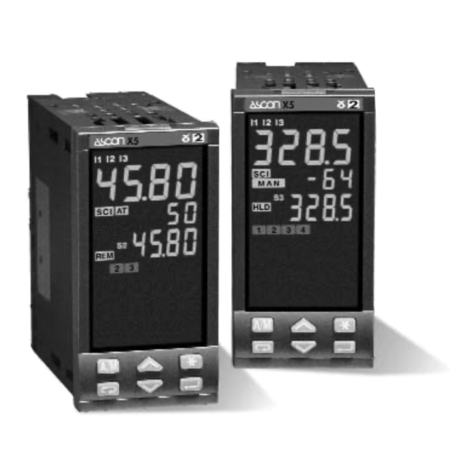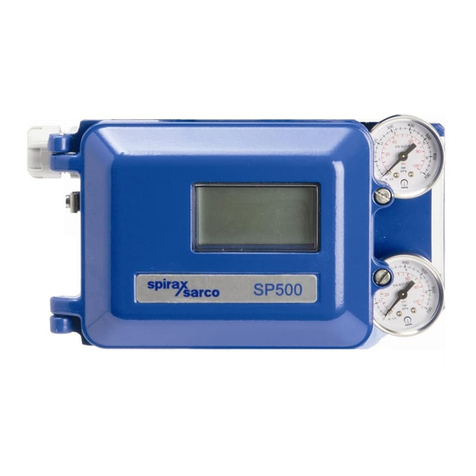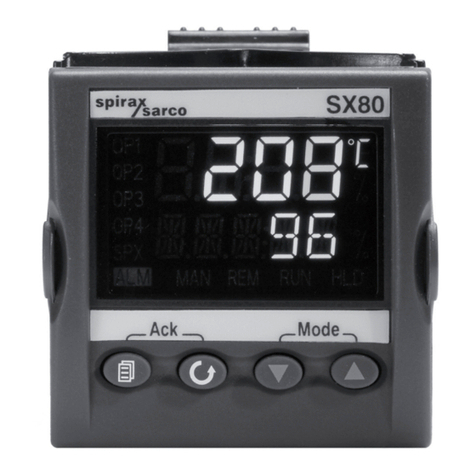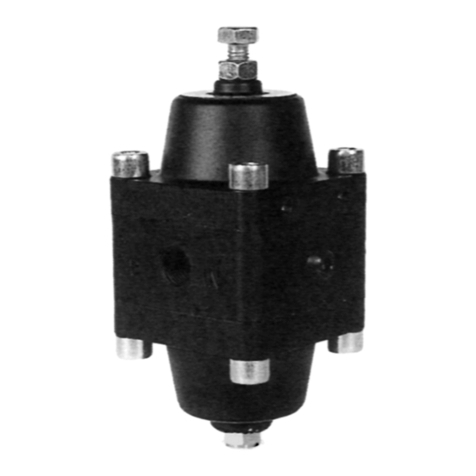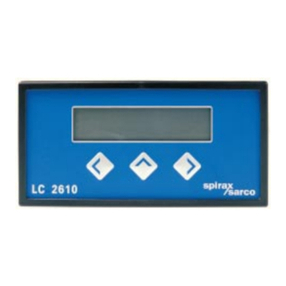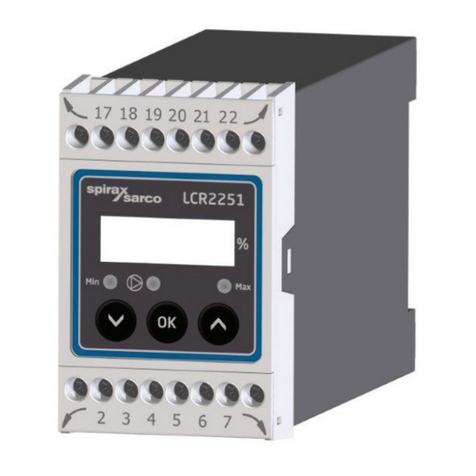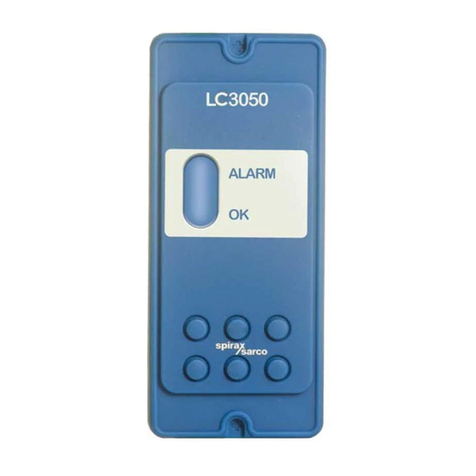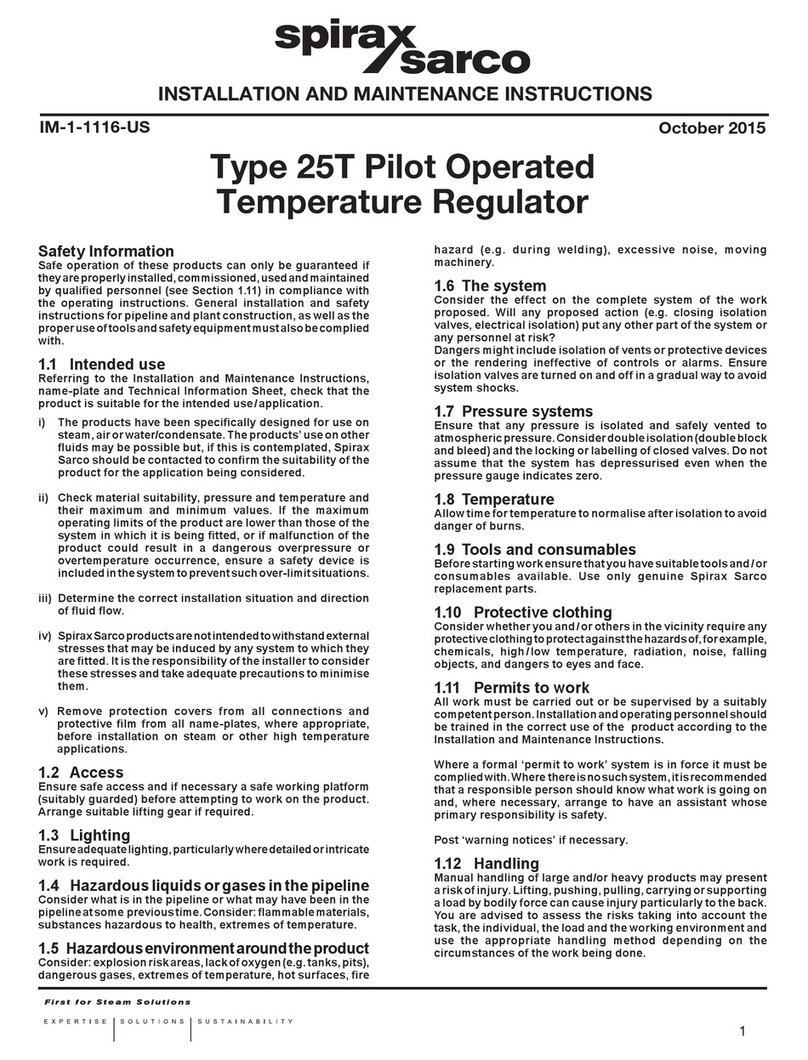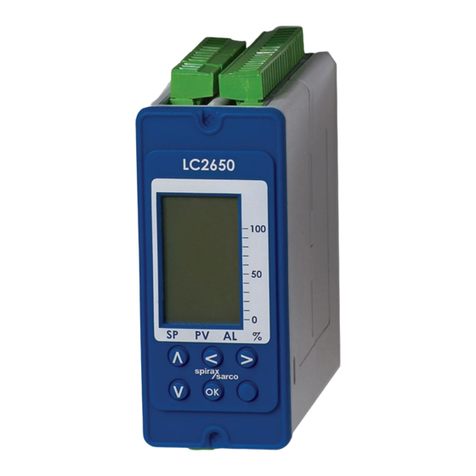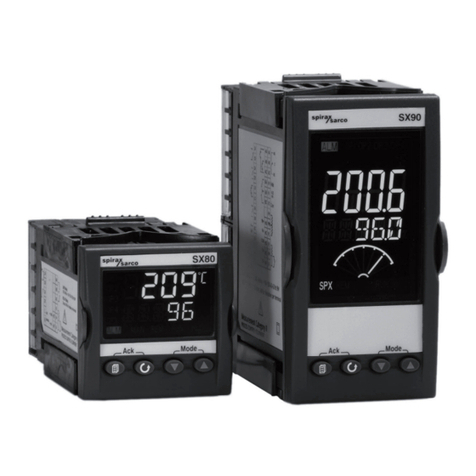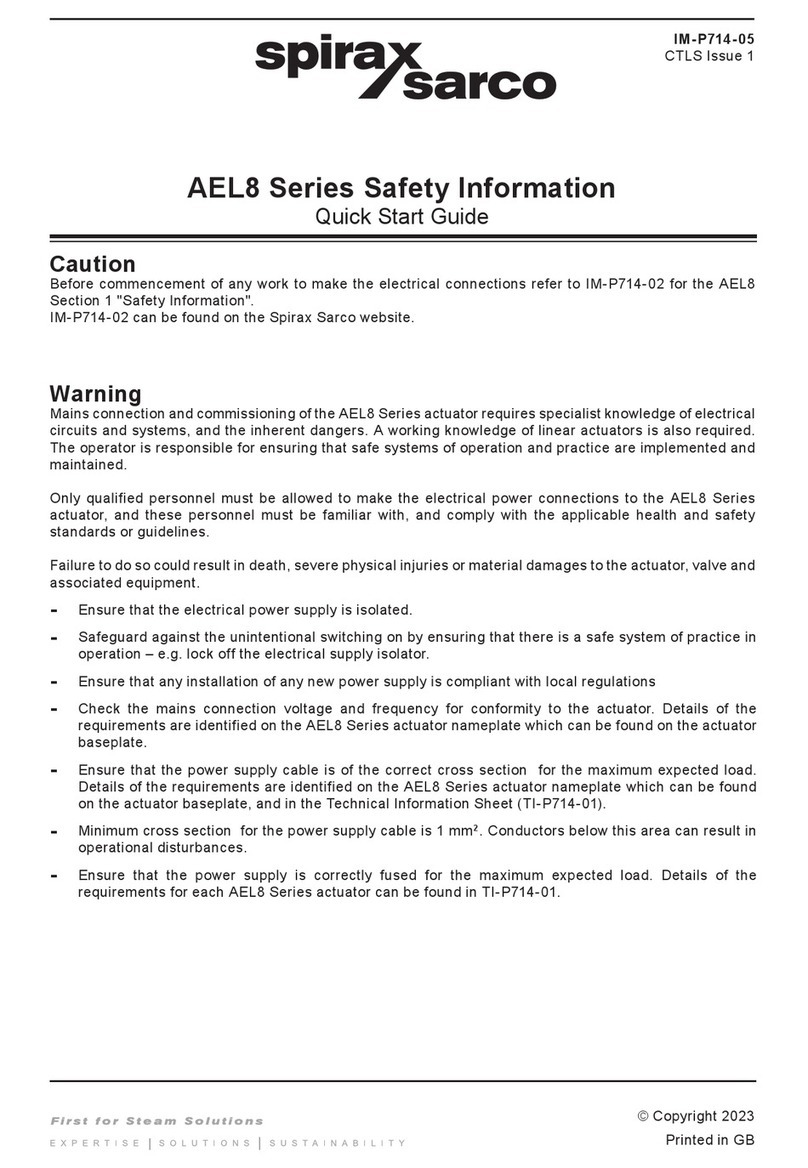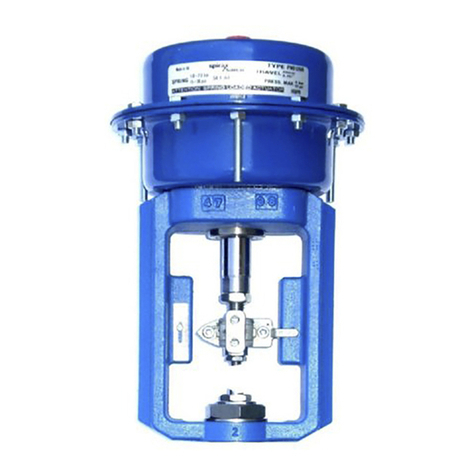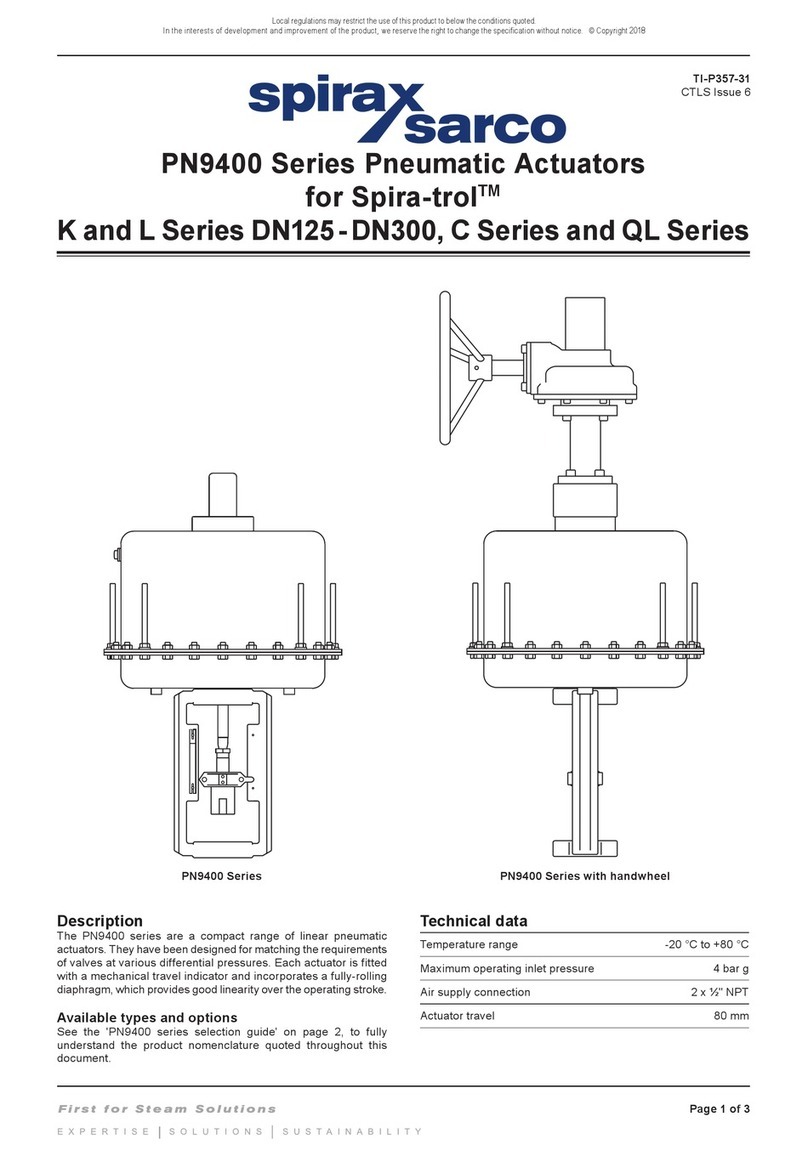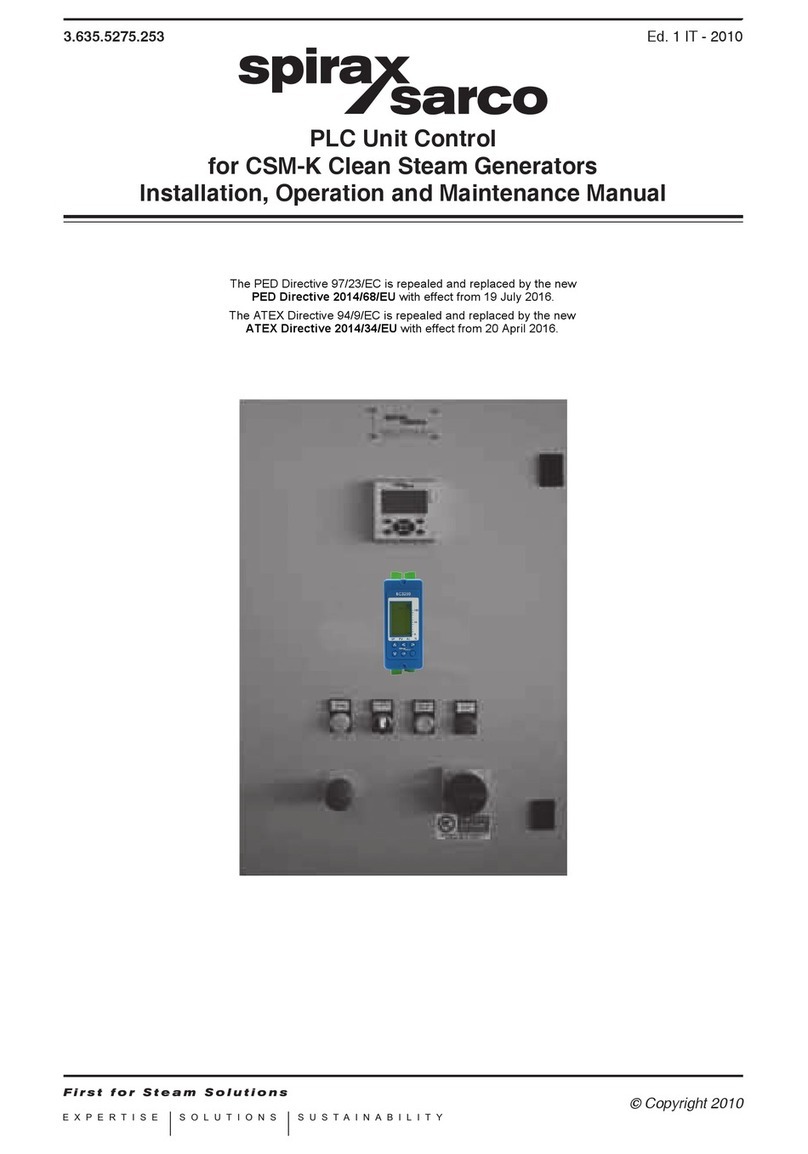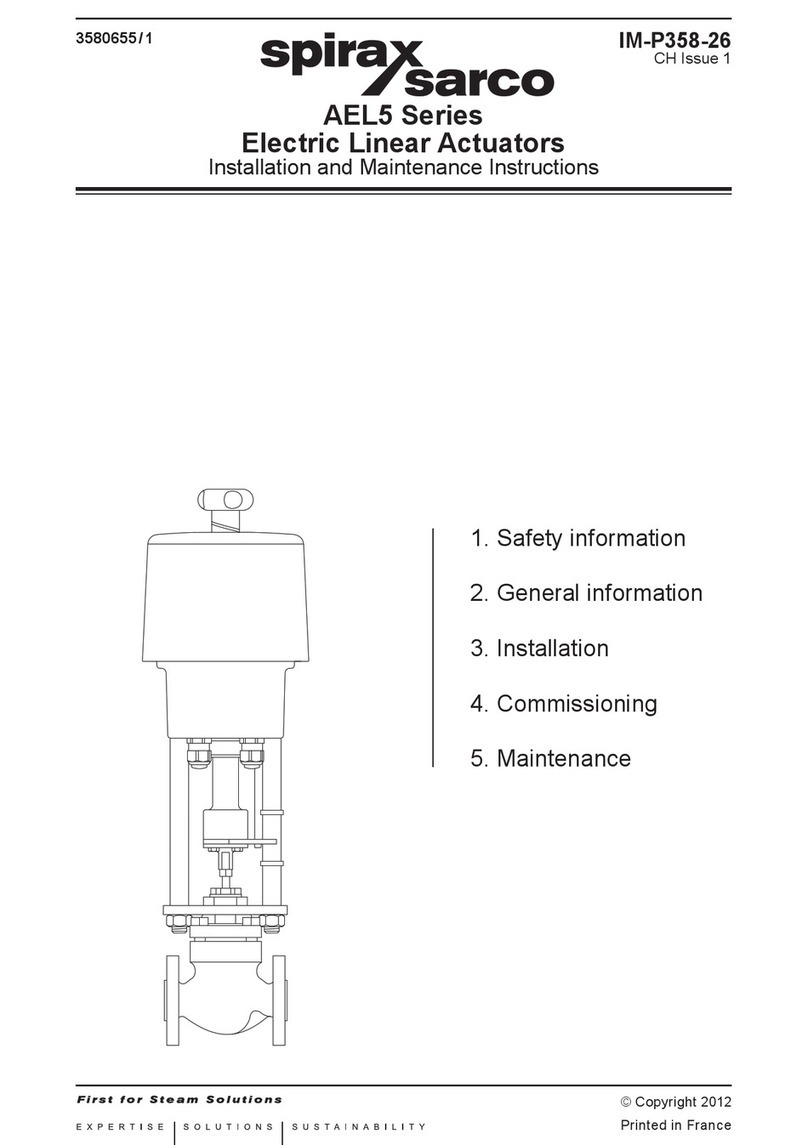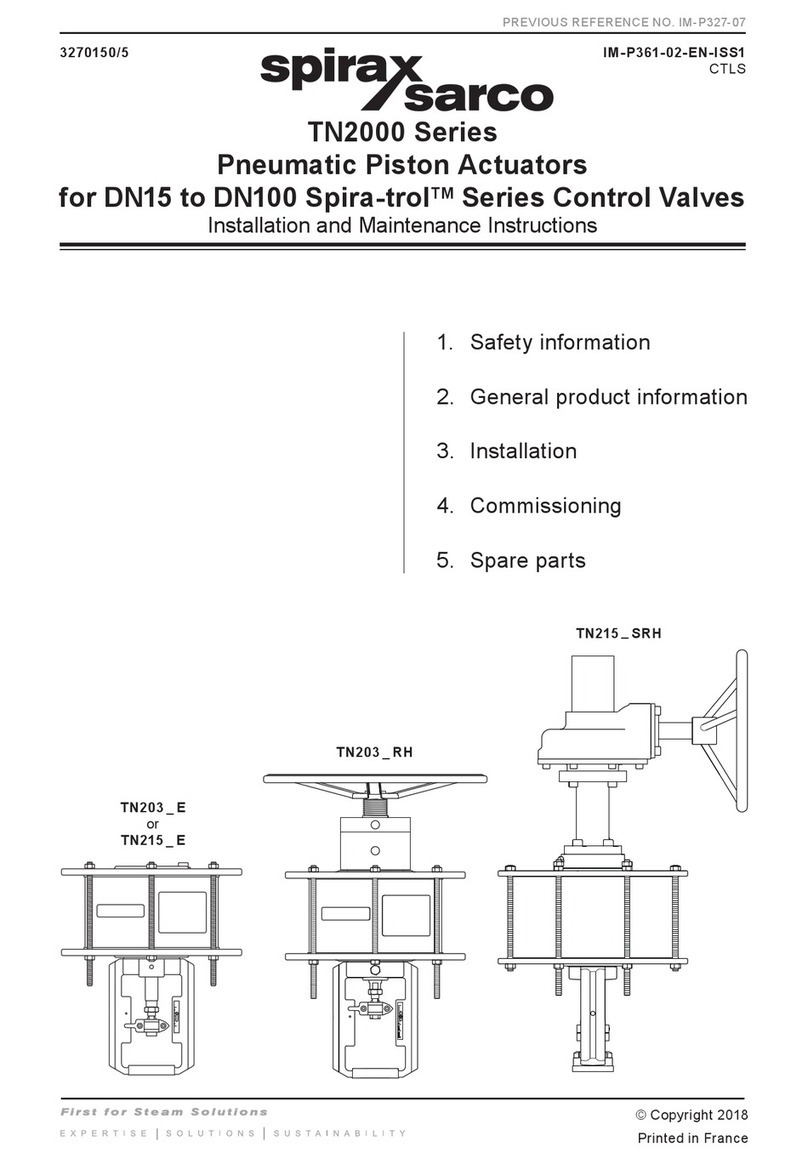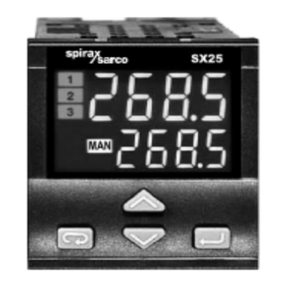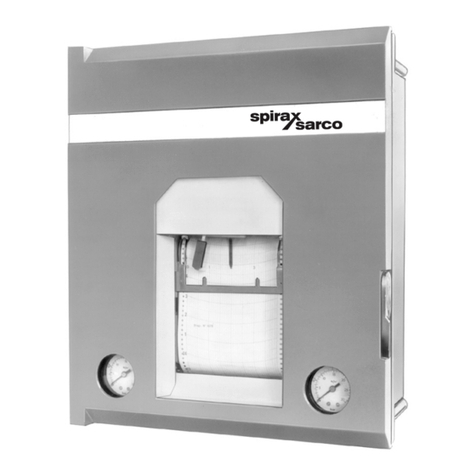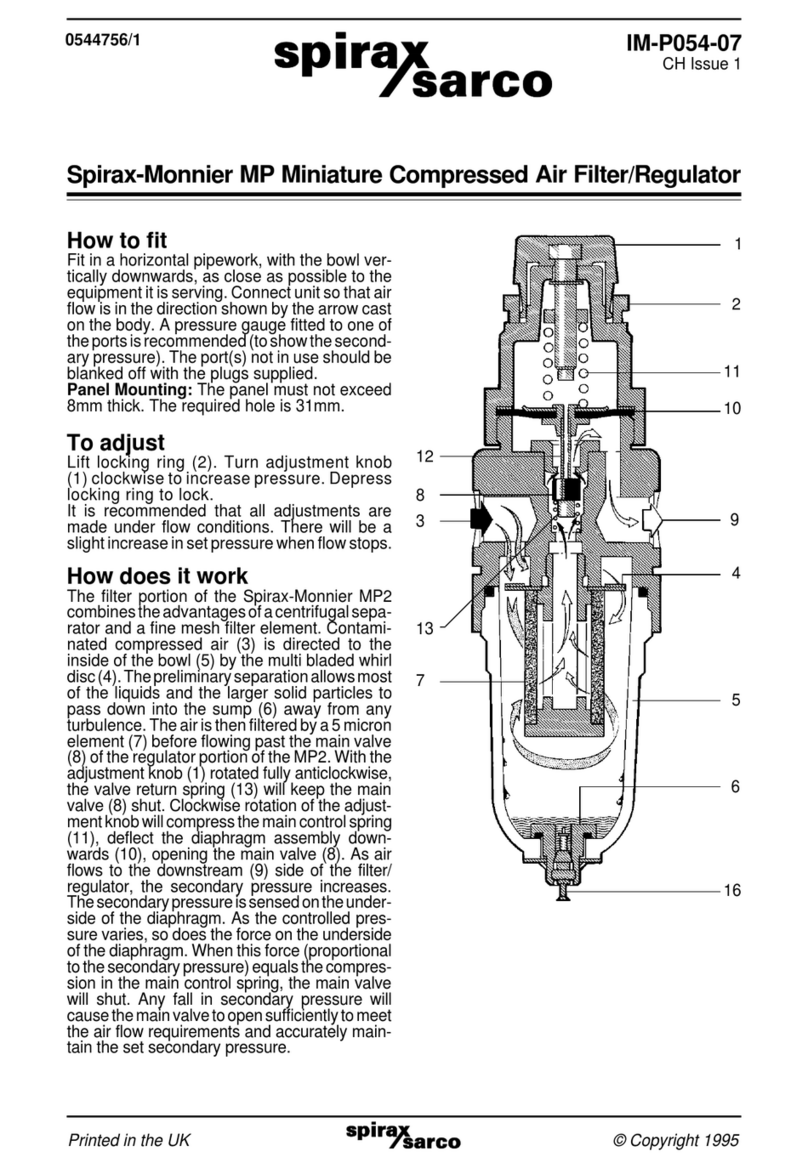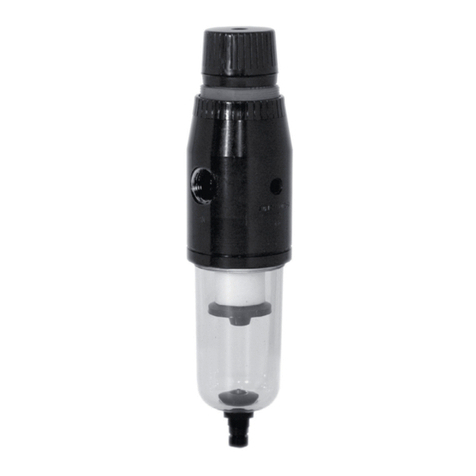
IM-P327-02 CH Issue 3
2
1. Safety information
Safe operation of these products can only be guaranteed if they are properly
installed, commissioned, used and maintained by qualified personnel (see
Section 1.11) in compliance with the operating instructions. General installation and
safety instructions for pipeline and plant construction, as well as the proper use of
tools and safety equipment must also be complied with.
1.1 Intended use
Referring to the Installation and Maintenance Instructions, name-plate and
Technical Information Sheet, check that the product is suitable for the intended
use / application. Please note that this product is out of the scope of the
European Pressure Equipment Directive 97 / 23 / EC.
i) This product has been specifically designed for use compressed air. The products'
use on other fluids may be possible but, if this is contemplated, Spirax Sarco
should be contacted to confirm the suitability of the product for the application
being considered.
ii) Check material suitability, pressure and temperature and their maximum and
minimum values. If the maximum operating limits of the product are lower than
those of the system in which it is being fitted, or if malfunction of the product
could result in a dangerous overpressure or overtemperature occurrence, ensure
a safety device is included in the system to prevent such over-limit situations.
iii) Spirax Sarco products are not intended to withstand external stresses that may be
induced by any system to which they are fitted. It is the responsibility of the installer
to consider these stresses and take adequate precautions to minimise them.
1.2 Access
Ensure safe access and if necessary a safe working platform (suitably guarded)
before attempting to work on the product. Arrange suitable lifting gear if required.
1.3 Lighting
Ensure adequate lighting, particularly where detailed or intricate work is required.
1.4 Hazardous liquids or gases in the pipeline
Consider what is in the pipeline or what may have been in the pipeline at some previous
time. Consider: flammable materials, substances hazardous to health, extremes of
temperature.
1.5 Hazardous environment around the product
Consider: explosion risk areas, lack of oxygen (e.g. tanks, pits), dangerous gases,
extremes of temperature, hot surfaces, fire hazard (e.g. during welding), excessive
noise, moving machinery.
1.6 The system
Consider the effect on the complete system of the work proposed. Will any proposed
action (e.g. closing isolation valves, electrical isolation) put any other part of the system
or any personnel at risk?
Dangers might include isolation of vents or protective devices or the rendering ineffective
of controls or alarms. Ensure isolation valves are opened and closed progressively to
avoid system shocks.
1.7 Pressure systems
Ensure that any pressure is isolated and safely vented to atmospheric pressure. Consider
double isolation (double block and bleed) and the locking or labelling of closed valves.
Do not assume that the system has depressurised even when the pressure gauge
indicates zero.
